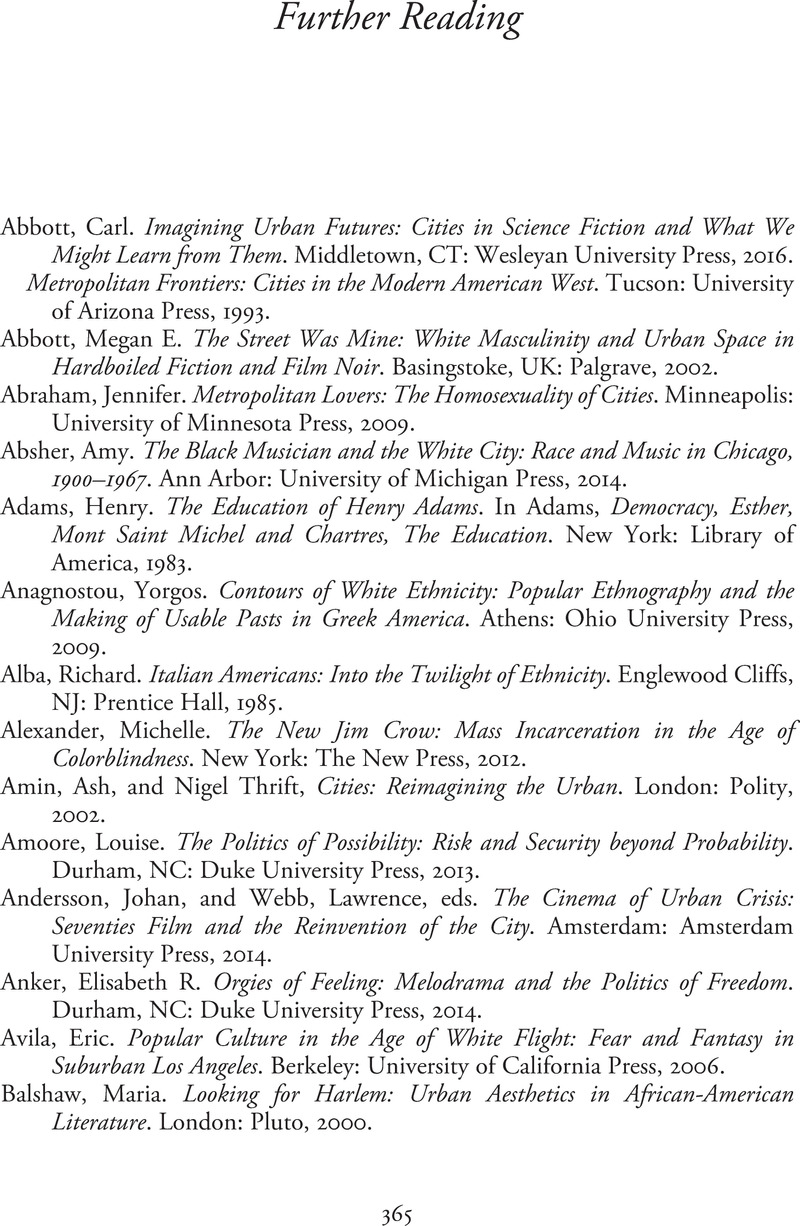Book contents
Further Reading
Published online by Cambridge University Press: 06 August 2021
Summary

- Type
- Chapter
- Information
- The City in American Literature and Culture , pp. 365 - 378Publisher: Cambridge University PressPrint publication year: 2021

